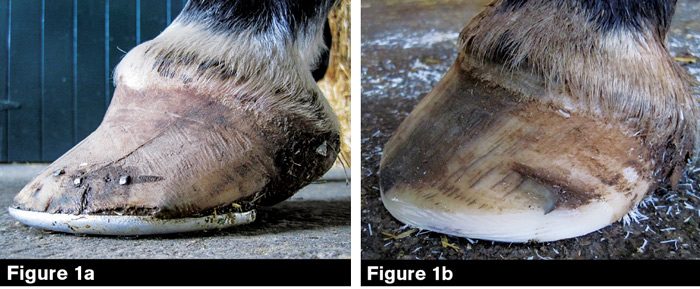American Farriers Journal
American Farriers Journal is the “hands-on” magazine for professional farriers, equine veterinarians and horse care product and service buyers.

The mare’s feet didn’t look good.
They had a dull appearance, were running forward and dishy. The hoof wall had chips and cracks, including one that traveled from the second nail to the coronary band (Figure 1a).
When poor hoof wall quality is evident in a horse, one of the first considerations is whether its diet is well balanced. Convinced that more supplements were necessary, the mare’s owner was no exception. While nutrition certainly can be a culprit, there are other potential causes to consider.
“We’re all frequently asked about hoof wall quality,” says Scott Morrison, a farrier and equine veterinarian at Rood & Riddle Equine Hospital in Lexington, Ky. “Not every horse needs more supplements. A lot of hoof wall quality problems are multifactorial.”
In the mare’s case, an unbalanced diet wasn’t the source of the problem. Rather, it was a mechanical issue.
“We pulled her toes back and used a roller motion shoe for a couple of cycles before letting her go barefoot,” Morrison says. “Look at the hoof wall (Figure 1b). It’s like a different horse.”
Besides nutrition and mechanical issues, there are also four other possible explanations for poor quality horn — genetics, hydration, coronary band pathology and chemical damage.
…